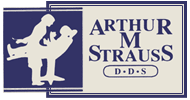Articles - Your Health Magazine, January 2008
From Normal Breathing To Snoring To Sleep Apnea
Sleep related breathing disorders form a continuum ranging from benign snoring and upper airway resistance syndrome, to severe obstructive sleep apnea. Apnea is defined as cessation of breathing for ten or more seconds. Hypopnea relates to a 30-50% reduction in airflow for ten or more seconds. There are three patterns of apnea.
- Obstructive apnea is the absence of airflow despite persistent breathing efforts.
- Central apnea is the absence of airflow due to lack of breathing effort.
- Mixed apnea is a combination of central and obstructive apnea with a central pattern evolving into an obstructive one
The vibration of the pharyngeal soft tissues creates snoring as air passes through an airway that is too small to allow for smooth, unimpeded flow. Some instances of loud, regular snoring, due to the exaggerated breathing effort and high resistance to airflow, result in repetitive sleep arousal. This condition, referred to as upper airway resistance syndrome, gives rise to the symptoms described above that are most often attributed to obstructive sleep apnea. In addition, the term “silent apnea” describes a condition where snoring has been silenced through treatment but apnea symptoms persist.
The collapse and/or narrowing of the upper airway associated with sleep related breathing disorders is due to:
- Pre-existing disproportionate anatomy from the nose to the glottis.
- Pharyngeal flaccidity from decreased airway dilator muscle tone.
- Negative intrapharyngeal pressure resulting from increased inspiratory resistance.
Management of sleep disordered breathing (SDB) can be either general or site specific. General approaches require avoidance of risk factors which include obesity, sleeping supine, eating excessively or drinking alcoholic beverages late at night, taking sedative-hypnotic medications and hypothyroidism. They also include the administration of medications such as protryptilene, which are not very effective. The gold standard of the general treatments is positive airway pressure that is most often delivered nasally in a single fixed pressure. More advanced versions of this deliver the air at bi-level pressure (inspiration and expiration) and are automated to adjust to changes in the patient’s unstable airway.
Site specific approaches refer to the disproportionate anatomy and the airway muscle dilator tone. Surgery can impact the anatomy through the removal of, first, excessive soft tissue of the nasal and oral pharynx, including lateral and posterior walls of the oral pharynx through uvuloplasty (UP) or uvulopalatopharyngoplasty (UPPP) and, second, the base of the tongue through base resection. It can modify tongue position by altering the position of muscle attachments. Surgery can correct hard tissue obstruction such as that of a deviated nasal septum, it can bypass soft tissue obstruction through tracheostomy procedures and it can change tongue and palate position through jaw advancement surgery. Surgery is essentially irreversible.
Oral appliance therapy is a non-surgical approach to management of tongue position. It prevents the base of the tongue from collapsing and obstructing the upper airway. Oral appliances may function in three basic ways: (1) by repositioning the mandible (lower jaw), tongue, and hyoid bone; (2) by stabilizing them; and (3) by increasing baseline genioglossus (tongue) muscle activity.
The dentist who is involved in the treatment of obstructive sleep disordered breathing is faced with all of these complex issues. He or she must have a working knowledge of various sleep related breathing disorders, other related sleep disorders, their diagnosis, management and treatment, the limitations and side effects of treatments, and more than one hundred oral appliances available for use in oral appliance therapy.
